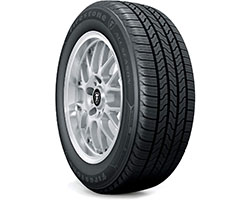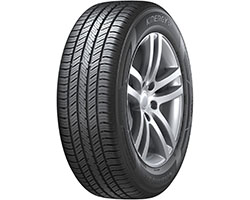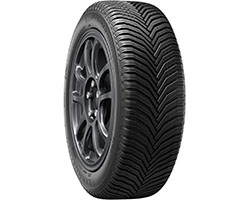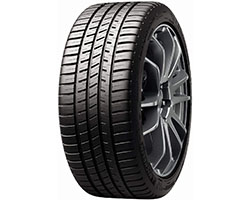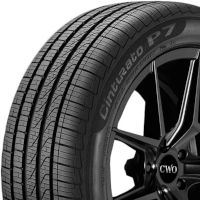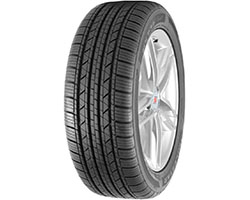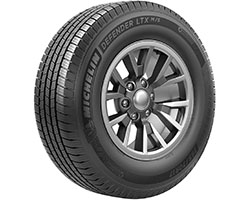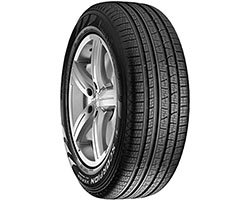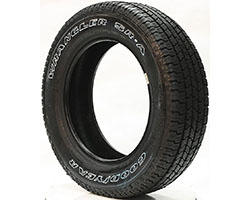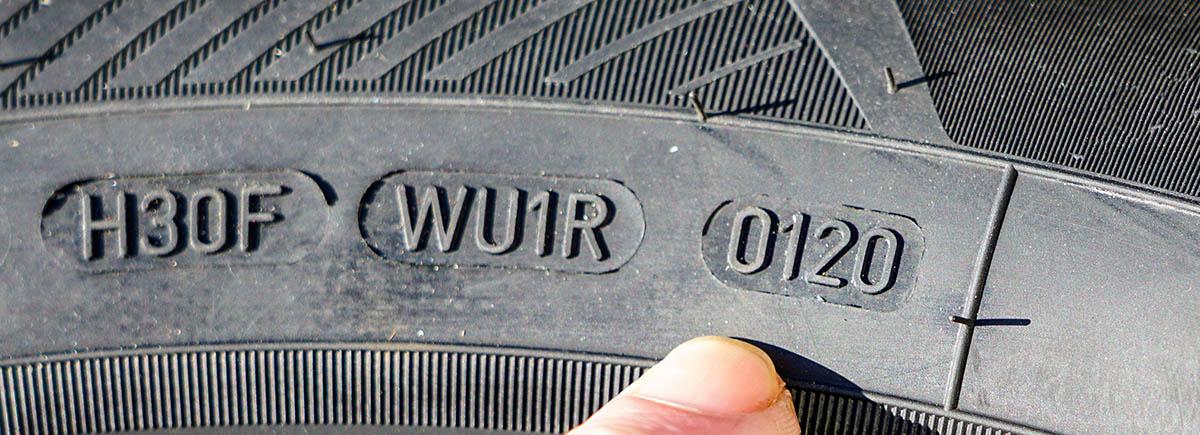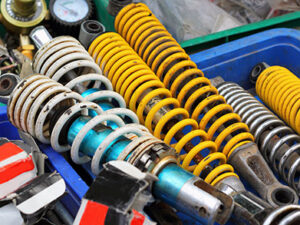Home \ Shop \ Automotive Garage \ All-Season Tyres
Best All Season Tires in 2025 (Review and Buyer’s Guide)
Selected tire models, specially developed for use in all 4 seasons of the year

- 1. Best Touring All Season Tires
- 2. FIRESTONE All-Season Touring Tire
- 3. BRIDGESTONE Turanza QuietTrack Touring Tire
- 4. HANKOOK Kinergy ST H735 Tire
- 5. Best All Season Tires for Snow and Ice
- 6. GOODYEAR Assurance WeatherReady All-Season Tire
- 7. MICHELIN CrossClimate2 All-Season Tire
- 8. FALKEN ZIEX ZE950 A/S TIRE
- 9. Best All Season Performance Tires
- 10. MICHELIN Pilot Sport A/S 3+ All Season Performance Tire
- 11. PIRELLI Cinturato P7 All Season PLUS 2
- 12. MILESTAR MS932 Sport All-Season Tire
- 13. Best All Season Tires for Trucks and SUVs
- 14. MICHELIN Defender LTX M/S All Season Tire
- 15. PIRELLI SCORPION VERDE Season Plus Tire
- 16. GOODYEAR Wrangler SR-A Tire
- 17. Benefits Of Using All-Season Tires
- 18. All-Weather Tires Marks
- 19. The Best All-Season Tire Brands
- 20. How long should the best all-season tires last?
- 21. Can all-season tires be used in winter?
- 22. What is the difference between all-season and all-terrain tires?
- 23. How do I check for early signs of damage?
- 24. How often should tire pressures be checked?
Way back in 1888 when Karl Benz fitted an air-filled rubber tire to the first gasoline car, all he expected of the wheel was to bring a modicum of refinement to the new horseless carriage – but, by 1905 with the introduction of the treaded tire, engineers were already looking for ways to improve performance.
Subsequently, in 1931, the industrialization of synthetic rubber by the DuPont Company gave rise to the development of an ever-increasing range of specialized tires designed to satisfy the requirements of novel vehicle types, road surfaces and more importantly, the demands brought about by seasonal extremes.
Before you buy the new tires you may need a tire & wheel calculator.
The changing seasonal demands would ordinarily force consumers to switch between two types of tire construction:
- Summer tires, designed to disperse water and prevent hydroplaning in the wet, that offer a good balance between wet and dry performance.
And…
- Winter tires, that are designed to operate under the cold inclement-weather conditions experienced during the harsh winter months when ice and snow are likely to be daily occurrences in some regions.
However users have a third option, one which is cheaper, far more convenient and arguably safer: They can opt for all-season tires that offer traction in both wet and dry conditions, as well as coping with ice and snow in winter, allowing for year-round driving without having to change tires.
Best Touring All Season Tires
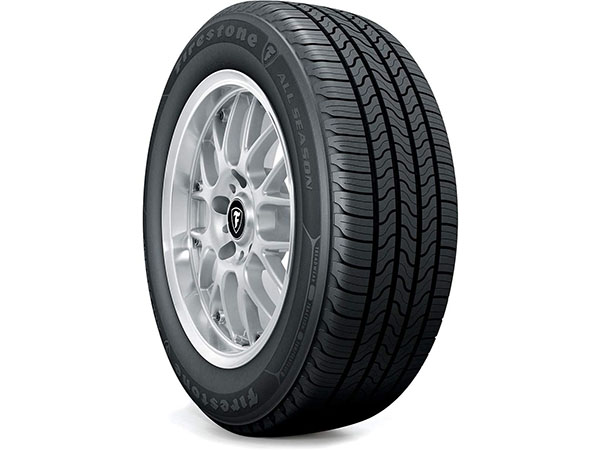
PROS
- It is affordable
- The tires are durable
- They provide better handling through varying weather conditions
CONS
- They are not dedicated winter tires
- Very high-speed driving not allowed
Touring tires are primarily designed to offer excellent handling to drivers. The Firestone all-season touring tires fulfill this primary duty and much more. People who drive cars that handle poorly, especially the faster and sportier ones, will find this tire brand very helpful in alleviating the horror and stress that poor handling can impact on one. Cars like the Dodge Challenger Demon, TVR Sagaris, and Toyota MR-2 are prime for this. These tires will help such cars to navigate corners better at decent speeds.
The Firestone all-season touring tire is generally the best. The tires are not expensive, durable, and provide stability and traction on the road, giving drivers a lot of confidence as they drive through bends and turns, even in differing weather conditions. They have a 65,000-mile wear warranty and are compatible with a wide range of vehicles; sedans, SUVs, and crossovers
The design of the tire is very attractive. It has deep grooves and cuts that run all through the length of the tires. The tires are also hard and have an extra internal layer of rubber. These features help to ensure maximum working capacity even in wet conditions, with water passing through the grooves and not negatively impacting the vehicle’s performance. These features also help to ensure a smoother ride as the car moves over bulges and debris along the road. The best part is that all these benefits are available to buyers at a cheap price.
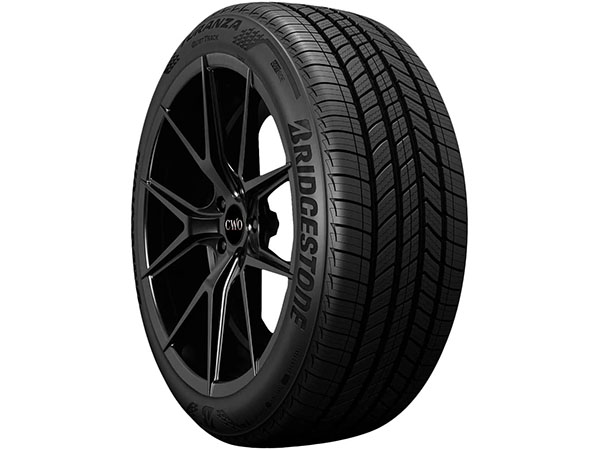
PROS
- More durable than most others
- Quiet performance
- Performs excellently in wet conditions
CONS
- Very high-speed driving not allowed
This tire set is a premium offering from Bridgestone and while it may cost more than others, it offers some more features and benefits beyond the scope of other regular alternatives. An outstanding feature of these tires is their long-lasting performance. The tires trump many others, guaranteed to offer drivers the best in road grip for 80,000, through different terrains and surfaces. Bridgestone went over and beyond with these tires. Their rim width is about seven inches. An ideal section tire width for such a rim size would be between 205 mm to 215 mm. These Bridgestone tires are 225 mm, providing more rubber for more grip and stability. The margins may seem infinitesimal on paper, but in reality, every millimeter counts in offering drivers that extra bit of confidence.
The tires are properly engineered to cope with high vehicle performance in wet conditions, expelling much water from the tires’ surfaces via open shoulder slots, cuts and grooves. The design also allows for the tires to deliver a much quieter performance than their counterparts.
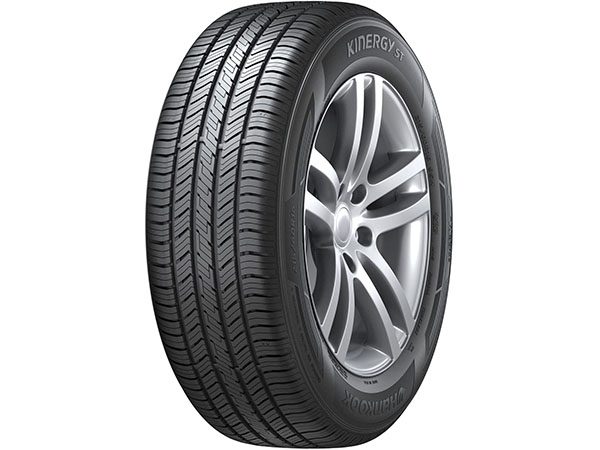
PROS
- It is very affordable
- 70,000-mile treadwear
- Noise reduction
CONS
- Very high-speed driving not allowed
These are the best touring tires one can get at the cheapest price possible. Hankook offers by far the best price on the market for their tires and these tires are yet capable to effectively do the work of the more expensive ones. Drivers can practically switch over and not experience any drop-off.
The South Korean company boasts a 70,000-mile treadwear for their tires and they offer an excellent warranty. Tires typically cause high rolling resistance when partially inflated, requiring more power than is necessary to move any vehicle. This in turn impacts the fuel economy. These tires prevent this by dual-filler technology, which ensures that tires are adequately inflated and rolling resistance is as low as possible. This technology also ensures that the tread of the tires grips the road in uniform motion, impacting on uniform tread wearing, tread durability, and increased handling in wet and dry conditions.
Sipes and circumferential grooves along the tires help to remove as much water from the surface of the tires and reduce driving noise to the barest minimum
Best All Season Tires for Snow and Ice

PROS
- Tires with severe snow certification
- The tire tread is very suitable for snow
- Excellent tire design
- Premium tire quality
CONS
- Doesn't has side-protection system of the rim
- Doesn’t give the best performance in dry conditions
Goodyear Assurance WeatherReady tires are made for and compatible with almost any vehicle out there- SUVs, coupes, crossovers, sedans, and even minivans. These all-season tires can serve all year round, but their design especially enables them to be the best option suited for icy and snowy conditions. They have a Severe Snow Certification Symbol to assure drivers of the quality. They are the best all season tires for snowy conditions in general.
The rubber used in manufacture of these tires is soy-based and the tread is designed to have random markings, cuts, and grooves, to create asymmetrical patterns in the tire. They have 3D Treadlock Technology Blades situated at the center of the tire and the ribs of the outboard. These help to prevent cars from slipping on icy roads when cornering. The grooves of the tires evolve as the tires wear out to maintain the high level traction they offer, so that even years after, the tires function as new. There is also extra silica in the tread.
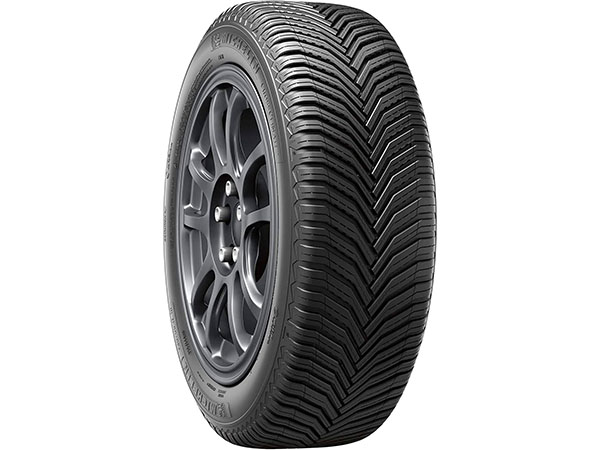
PROS
- Tires outperformed other industry leading alternatives
- Excellent performance in dry conditions too
- They are little bit quieter on a ride, than other
- 60,000-mile Michelin warranty
CONS
- Doesn't has side-protection system of the rim
- Can’t function as a dedicated snow tire
- Tires are expensive
Michelin is a worldwide leading tire brand that puts many others to shame. These premium tires are pricey, but well worth it. These tires meet severe snow service requirements and are up to industry standards. The tires have a signature V-shaped tread pattern which ensure optimum performance in all seasons. The pattern especially helps to evacuate water, forming somewhat of a drainage path.
The tires are also advanced engineered to be noiseless by means of Michelin’s Piano Noise Reduction Tuning. This tuning causes modifications in the tread of the tire which cancels out. The tires also brake exceptionally thanks to the V Ramp Chamfers. Brake tests carried out with Michelin tires and other industry leading competitors in wet conditions, showed four others to still be travelling at a speed north of 24 mph, even after these Michelin tires had stopped. The case wasn’t any different in dry conditions, as the Michelin tires stopped 16 feet before the four others stopped.
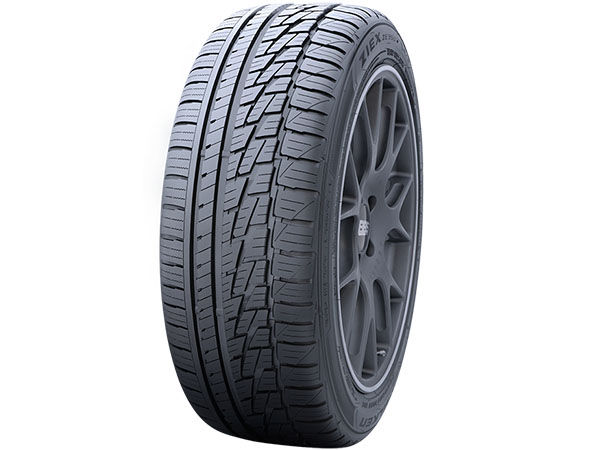
PROS
- It has side-protection system of the rim
- Adapted design for optimum function in snow
- 65,000 mile treadwear warranty
- Cost-effective and modern tires
CONS
- Performance is not as top notch as other premium alternatives
These Falken All-season tires are the best tires at the cheapest price possible, suited for navigating through icy and snowy conditions. The tries can also hold their own weight in dry conditions. The tires are engineered to have 3D Canyon Sipes. This piece of design dramatically increases the edges and interlocks when pressure is applied on them from weight in the vehicle, to give better handling and performance in icy slippery conditions. The sipes also allow for even wear across the tires. One more good feature is that the wheel is not afraid to touch the kerb during parking, thanks to the system of side protection of the rim.
The tires have huge grooves that run along the outer circumference of the tires that help to remove excess water as the tires eat up slippery roads. I like how smooth the performance of this brand of tires is, being that confidence is an important thing for drivers. Ample confidence is exactly what these tires give to drivers.
Falken has an especial DRT (Dynamic range technology) incorporated into the compound of the tread, and the tread is designed into an asymmetric pattern. The DRT in the tread’s compound allows it to be flexible even near-freezing temperatures.
Best All Season Performance Tires
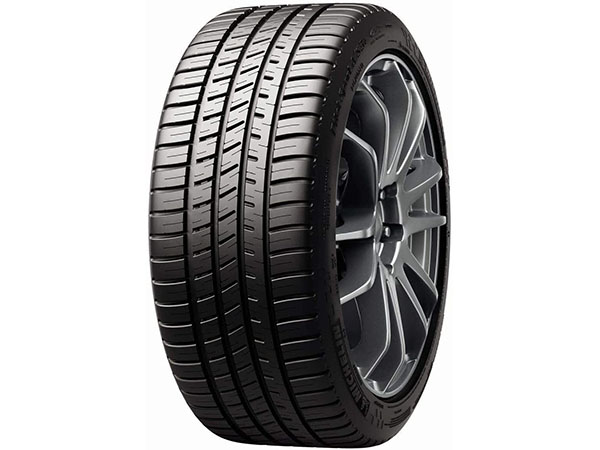
PROS
- Tires remain flexible when cold
- Side-protection system of the rim
- Tire design enables optimum cornering at high speeds
- This tire's all-weather technologies provides extra benefits
CONS
- More expensive than regular tires
Michelin is a tire manufacturing company that needs no introduction, having a lot of customer loyalty across the world for their quality offerings. The Pilot Sport A/S 3+ is their all season performance tire, and it is the best in general in the performance category. Performance cars typically require stronger and more suitable tires than regular sedans and coupes, seeing as they have bigger engines that produce more power, and deliver more speed. The Pilot Sport A/S 3+ tires help these vehicles to corner with optimum control for the driver.
The pressure on the tires from cornering is spread uniformly across the surface of the tires that grip the road, thanks to Michelin’s Variable Contact Patch 3.0. This technology ensures that with the entire surface of the four tires’ contact patches evenly gripping the road, enough is done to keep the car from skidding across even in wet conditions at considerable speed. The silica plus compound in the tread allows the tires to still grip properly even when wet and the Helio plus technology helps the tires to remain flexible in the cold.
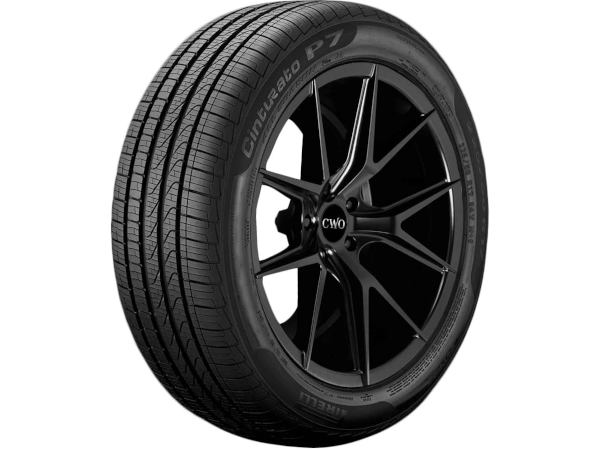
PROS
- Green performance
- Run flat technology allow tires to run for 50 miles with no air pressure
- Tread wear indicator
- Brand familiar in motorsport
CONS
- Doesn't has side-protection system of the rim
- Quite expensive
The Cinturato P7 all season radial tires are Pirelli’s premium run-flat performance tires. These tires do everything that average performance tires do, and some more. It’s no wonder why Pirelli is a popular brand name in Formula 1. These tires have the amazing Pirelli Run-flat technology. The technology allows tires to still run for a distance of up to 50 miles, moving the vehicle at a speed of up to 50 mph, in the advent of a puncture that causes total loss of tire air pressure. Talk about confidence for drivers on another level.
At the heart of Pirelli’s tire design is environmental consciousness. As such most of their tires, including the Cinturato P7, foster vehicular performance that reduces the emission of toxic substances that are harmful to the environment. The compound used in the manufacture of the Cinturato P7 tread is a low rolling resistance compound which contains certain chemicals that escalate the gripping power of the tires in both wet and dry condition, thereby reducing the amount of fuel consumed by the car and the carbon dioxide emitted.
The tires have a random tread design, deep grooves which round across their entire outer surface which make contact with the ground, and two steel belts within that are wrapped on a polyester cord. These all contribute strength, traction, and durability to the tires through multiple climates.
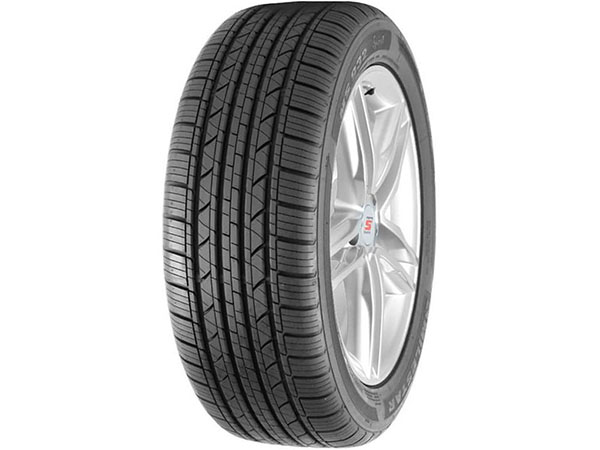
PROS
- Inexpensive tires
- Provides good road traction all 4 seasons
- Good quality assurance by manufacturer
- Tread wear indication
CONS
- Tread warranty is less than other competitors (50,000 miles)
These Milestar tires are by far the cheapest performance all season tire you will be able to get for good quality. They may not be able to stack up to tires like the Pirelli CInturato P7 but can hold their own weight. These tires are suitable for any performance sedans, coupes, or even roadsters. They have the H/T/V speed performance rating So drivers can be assured that the tires have them covered at high speeds. The tires are designed to have wide ribs and water channels, which reduce the risk of hydroplaning and improve handling, traction, and the overall stance of vehicles.
The tires have a decent 50,000-mile treadwear warranty, so drivers can be assured of the durability of the tires. There are two types of sipes on the tire; both angular and longitudinal sipes which help to create more surface area for increased grip in different weather conditions.
Best All Season Tires for Trucks and SUVs
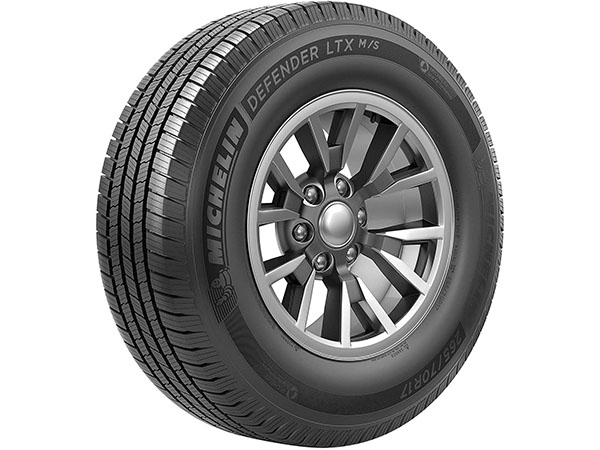
PROS
- 70,000-mile treadwear warranty
- Flat tire assistance for three years
- Solid traction in wet & snow conditions
- Suitable for difficult road conditions
CONS
- They are not dedicated winter tires
As a world-leading brand, Michelin is not one to shy away from the bigger and heavier duty vehicles. Their Defender LTX tires are the best all season tires in general for SUVs, Trucks, Pickups, some Vans and Crossovers. The tires are reasonably priced and can give some other industry-leading brands a good challenge with their own offerings. The tires operate efficiently and quietly, something that may be much desired considering the weight of the corresponding vehicles they serve.
Large vehicles such as SUVs and trucks typically have more weight, and they also produce more power and torque. The torque and the weight of these vehicles particularly can cause ordinary tires to wear off faster. That is why Michelin Defender LTX tires have upgraded treadwear. The tread of the tires contains a highly developed compound which makes the tires tougher for more rigorous activities. The tread is divided into a consistent pattern, having animated sipes and ample circumferential grooves. Collectively, these help to provide maximum traction by eliminating liters of moisture content per a few revolutions of the tires.
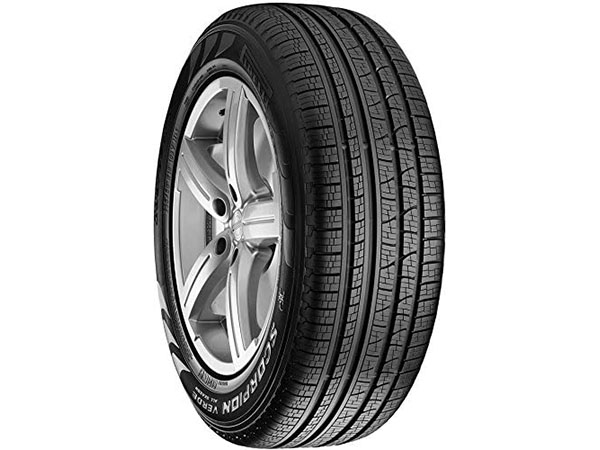
PROS
- Good handling of SUVs on higher speeds
- Side-protection system of the rim
- Green performance
- Tread wear indication
CONS
- Drivers experience road noise beyond 50 mph
The Scorpion Verde is Pirelli’s All season tires for Light Trucks, Vans, SUVs, Crossovers, and Sports Utility Vehicle. These tires are premium choice tires and they possess qualities that are not found in other brands. The tires operate green performance technology, which optimizes the tires for best performance on the road while reducing fuel consumption and the amount of carbon dioxide emitted.
The tires were created using an advanced silica compound, with the tread molded into asymmetric designs for max grip. There is a balanced ratio between the amount of the tire’s surface that is the contact patches and the deep grooves which serve as channels through which excess water is expelled. This balanced ratio is necessary to ensure optimum tire functionality. The contact patch is uniform to improve handling and allow for uniform wear with the usage through time. There are both longitudinal and lateral sipes. Both help with firmness to the ground, even in wet or winter conditions.
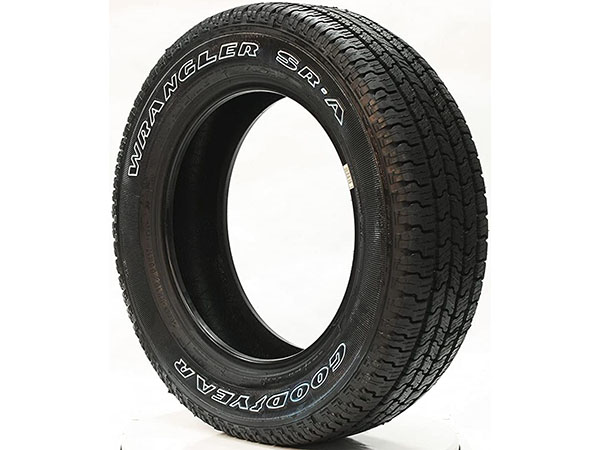
PROS
- Stock tires of some car brands
- Good noise reduction
- Cult design
CONS
- Only 50,000-mile treadwear warranty
The Wrangler SR-A is Goodyear’s all-season budget tires for Trucks and SUVs, some Crossovers and Vans. The tires are actually used as production tires that come along with brand new vehicles, for quite a number of vehicles. This is a testament to the fact that Manufacturers trust the Goodyear Brand, but also that these tires help to reduce the cost of production. The tires were designed to achieve two main things. First, to provide optimum traction all year round, and second, to reduce noise-related performance to the barest minimum, even on roads with lots of debris.
The tires are reinforced internally with two steel belts, further strengthened with a polyester cord. This internal structure is crucial to the durability and sustainability of the tire’s performance, seeing as they would bear much more weight than other all-season tires, due to the type of vehicles they serve. These tires can manage speeds of up to 104 mph and a maximum weight of 2,600 pounds. Drivers are guaranteed a cool 50,000 miles with them.
Benefits Of Using All-Season Tires
The multifaceted versatility of “all-season” tires have made them a very popular choice for many consumers:
- The design and construction of the best all-season tires for snow and Ice, as found on the Goodyear Assurance WeatherReady All-Season Radial Tire, allow for operation over a wide range of climatic conditions – including snow and ice.
- The refined ride provided by tires such as Firestone’s All Season Touring Tire, considered the best tire for touring, also makes them ideal for everyday driving.
- With the market increasingly dominated by Crossover and utility vehicles, an added level of versatility can be gained by fitting the best all-season tires for Trucks and SUVs. For instance: Widely acknowledged as one of the best all-season tires for Trucks and SUVs, the Michelin Defender LTX M/S All- Season Radial Tire not only offers excellent all weather, year-round performance, but also offers impressive load-carrying capacity and a 70,000 Mile Manufacturer’s Limited Treadwear Warranty.
- Continuous development by companies like Michelin, with their Pilot Sport A/S 3+ All Season Performance Radial Tire, has resulted in a range of tires that can rightfully claim to be the best all-season performance tires, that are well suited to applications that demand sustained, high-speed.
- Typically, the running costs of all-weather tires are also less than the cumulative costs of the two sets of tires that may otherwise be needed to cover year-round motoring.
- Due to their construction and the compounds used in their manufacture, all-weather tires also offer longer tire life.
- Warranties tend to be longer, with many manufacturers offering in excess of 80,000 miles.
Consequently, most vehicles today are fitted with all-season tires when they leave the factory.
You may also be interested in: Floor Jacks and Best Tire Pressure Gauges, or Emergency Kit with Tire Inflator.
But tires don’t last forever, and sooner or later owners will have to replace the ones fitted by the factory with parts they source from the aftermarket.
Even for the experienced motorist, when the time comes to replace tires there is a lot to take into consideration before deciding on the best all-season tire.
All-Weather Tires Marks
Before shopping around for a new set of all-weather tires it is important to make sure that all the tires on the vehicle are the same – having a mix of tires will result in unpredictable handling. So, faced with a sizeable investment, what should the consumer consider when weighing-up the seemingly endless array of tire choices?
NOTE: Always try to buy a new or fresh tires at first. They should work better.
We recommend paying attention to the age of your possible new tires. This simple mark (0120) is shown above in the photo. This always means the approximate date of production: January – is the first month (01) and 2020 year (20 is the two last digits in 2020). You may ask your seller about the real tire production date, which should be marked on every tire.
The first rule of choosing the best all-season tire is to adhere to the manufacturer’s specifications, the meaning of which is explained in this example of the information displayed on the sidewall of the tire:
A classification of P195/60R16 63H M+S would denote the following:
- P – Type of tire (In this case passenger vehicle)
- 195 – Width of the tire across the tread in millimeters
- 60 – Aspect ratio of the sidewall compared to the width
- R – Radial construction (This is the standard in modern cars)
- 16 – Diameter of the rim in inches
- 63 – Tire’s load rating
- H – Tire’s speed rating
- When it comes to all-season tires, S– and T-speed ratings offer good all-weather performance and long mileage – albeit at lower sustained speeds – and are commonly found on less powerful cars and SUVs.
- On the other hand, performance all-season tires with H– and V-speed ratings are capable of higher sustained speeds and generally provide better handling than those rated S and T, but often do not last as long.
- Top of the range ultra-high-performance all-season tires rated as ZR, W, and Y are reserved for sports cars and performance sedans capable of sustained high-speed driving.
- M+S – Tire is suitable for all-season driving.
While these tire specifications are critical considerations when shopping for the best all-season tires there are several other factors that consumers should take note of when evaluating the tire’s suitability:
- Safety ratings. As measured by the Uniform Tire Quality Grade (UTQG), take into consideration three critical elements when ranking the tire’s performance:
- Traction ratings are an indication of the tire’s level of grip on the road’s surface. Rated as: A, AA, B, or C – with A and AA being the best.
- The treadwear grading is a comparative rating based on the wear rate of the tire when tested under controlled conditions on a regulated government test track. Thus, a tire rated as 400 would theoretically last twice as long as one graded 200, when tested under the same controlled conditions.
- The temperature gradings, rate the tire’s cooling ability at speed, and are scored as A, B and C, from highest to lowest:
- ‘A’ rated tires are capable of dissipating heat at speeds in excess of 115 mph.
- ‘B’ grades are suitable for speeds between 100 mph and 115 mph.
- ‘C’ rated tires are fit for operation between 85 mph to 100 mph.
- Tread patterns. They plays an important role in the tire’s performance and are loosely categorized as:
- Unidirectional – These all-season tires are designed to rotate in one direction only. The wheels fitted with these tires require regular rotation/ cycling around the vehicle to prevent uneven wear.
- Symmetrical – These all-season designs tend to last longer because the grooved patterns will wear down evenly without having to rotate the wheels.
- Asymmetrical – This construction is mostly found fitted to sports cars or high performance vehicles, because they are capable of generating superior cornering loads at higher speeds.
As a general rule treads that are open and narrower offer a good compromise between traction and the ability to drain water from the tire surface in wet conditions.
- Guaranteed mileage. Many manufacturers guarantee the mileage of their all-weather tires. It is important to understand the conditions of the guarantee, as well as ensuring the tire meets all other requirements as described above.
- Price. This is often a tradeoff against performance, so it is important that the correct specification and performance ratings are selected – choosing to fit a ‘Y’ speed-rated tire to a vehicle that only requires a ‘S’ is going to cost money and offer no benefit.
5. Brand of tire. With tires being manufactured around the world it is not always easy to determine the validity of the claims made by the manufacturer, or even the quality of the product; it is, therefore, important to stick to reputable brands when looking for the best all-season tire.
The Best All-Season Tire Brands
Selecting the best all-season tire is not only about performance; it is even more important that safety is guaranteed, including the processes and systems that manufacturers use to design, develop and manufacture these safety-critical components.
Thus when making the purchase the best guarantee the consumer has, that all quality and safety measures have been met, is to only consider well-known, reputable brands, such as:
- Firestone, with its 50,000 mile limited treadwear warranty, offers an all-season tire with impressive handling and control on dry and wet roads while retaining traction in snowy conditions.
- Bridgestone has engineered its all-season tires to suit the most popular sedans and minivans on the road, offering dependable all-season performance, safe handling and a comfortable ride.
- Hankook all-season touring tires were developed to meet the needs of coupes, sedans, minivans, SUVs and trucks – offering excellent handling without compromising ride and comfort.
- Goodyear all-season tire is aimed at vehicle owners looking to purchase a trusted name-brand tire that provides dependable year-round traction at a reasonable price.
- Michelin all-season tires offer versatile performance over a wide range of road conditions and are engineered to offer safe reliable driving on wet, dry, or icy roads.
- Pirelli, a company synonymous with performance, uses special and innovative rubber compounds with a high-silica content, low oil and carbon black, to produce all-season tires with notable traction capabilities.
- Milestar, aimed at the cost sensitive market sector, has designed its all-season tire to provide dependable all-weather traction with a comfortable ride, while still maintaining good handling and cornering grip.
- Falken all-season passenger car tire is mostly known for its durability, but also provides excellent comfort and all year round driving.
However, even the best all-season tire in the world will not deliver the advertised mileage, handling or ride if not properly maintained. The time and money invested in shopping for the best all-season tires will pay-off over time as the extended life of well maintained tires brings down the overall running costs of the vehicle. What is more, the peace of mind, knowing that well maintained all-season tires can be trusted in all weather conditions, is priceless.
How long should the best all-season tires last?
With normal driving and proper vehicle and tire maintenance the best all-season tires should comfortably last 50,000 to 80,000 miles. What is more, many all-season tires come with a guarantee that typically ranges from 40,000 to 85,000 miles.
Can all-season tires be used in winter?
All-season tires typically have a closed tread pattern designed to disperse water that also works well in mild winter conditions. However, in severe winter situations these closed tread patterns can pack up with ice and snow, reducing the tire’s ability to grip the road.
Winter tires, on the other hand, have open tread patterns with sipes – which are grooves cut into the tread to create hundreds of small ridges – that effectively cut through the ice and snow.
What is the difference between all-season and all-terrain tires?
While all-season tires provide a good balance of traction between wet and dry roads and perform well on paved roads all year round, all-terrain tires – with their aggressive tread patterns – provide better traction in off-road conditions.
How do I check for early signs of damage?
As mentioned earlier, a simple visual inspection of the vehicle’s all-season tires will quickly reveal any signs of unusual wear and tear or damage. So, underinflated tires will show signs of wear on the outer edges, while any cuts or bulges on the sidewall, would be a sure sign of structural damage to the tire.
How often should tire pressures be checked?
Although a visual inspection might highlight a badly under-inflated tire it is important to measure each tire’s pressure at least once a month or before undertaking a long trip. A slightly deflated tire will negatively impact fuel consumption, CO2 emissions and could also result in problems during emergency maneuvers.
We do an efforts to find, research and recommend the best products. So, we may receive commissions from purchases that you make after following the links in our product reviews.
Related Products
-

Best Air Compressors For Home Garage Use in 2025 (Review)
-

Best Car Phone Mounts and Holders for Convenient Use in 2025
-

3 Best Shock Absorbers for Smooth and Precise Driving in 2025
-

Best Electric Vehicle Chargers For Home (TOP Products Review and Buyer’s Guide)
-

Best Windshield Wipers and Wiper Blades Shortlisted in 2025


